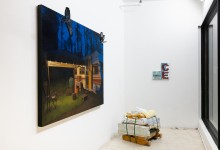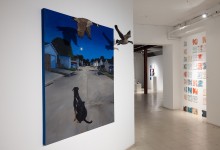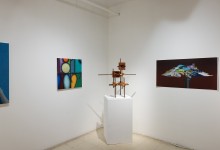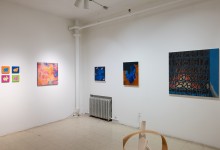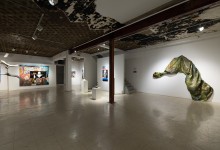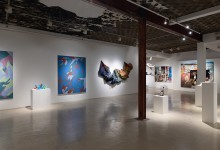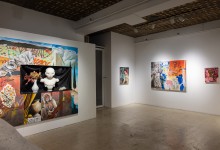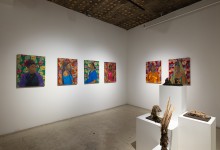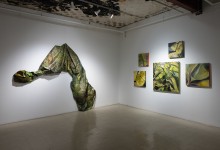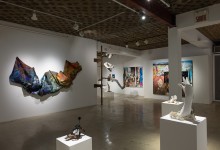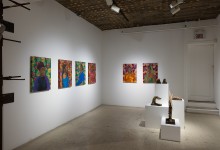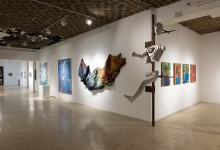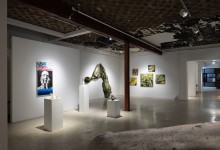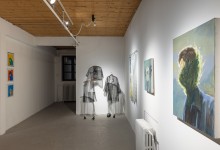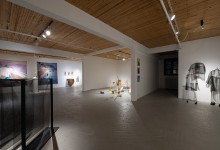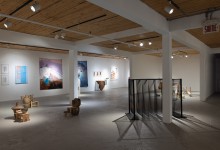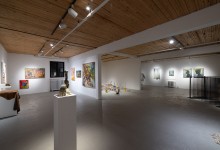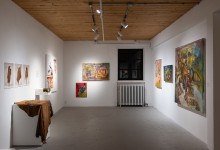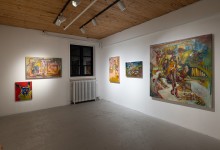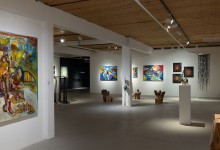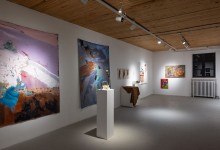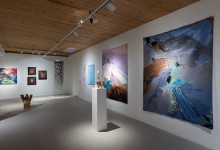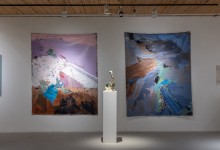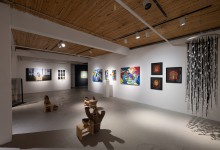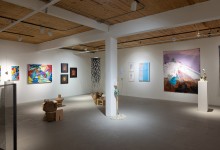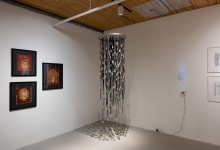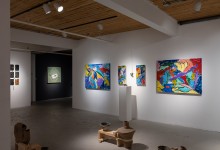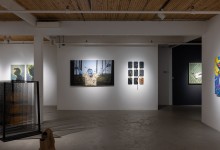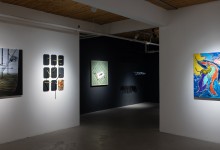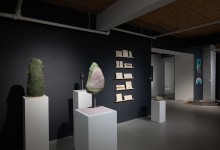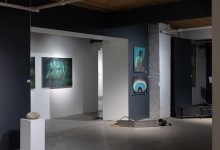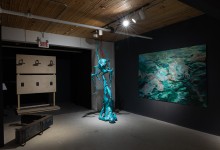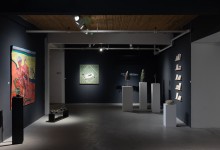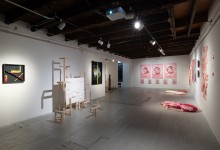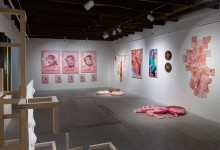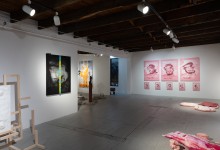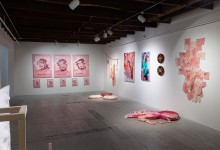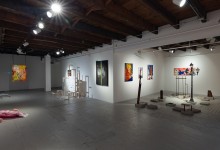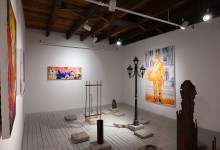Opening reception: Saturday, July 19, 2025 from 3 p.m. to 5 p.m.
Fresh Paint / New Construction– 21st edition
Artists: Daniel Allen, Hannah Alsdorf, Mélodie Aubut, Karolina Baker, Jessica Beaugrand, Hadiza Jummai Bello, Raphaelle Bitar, Elias Burns-McKay, Sydney Caldwell, Michaël Côté, Nathan Derome, Armand Diansambu, Shay Donovan, Emily Escoffery, Gabrielle Flynn, Jaurès Goké, Guillaume Harvey, Abtahi Hassan, Yanique Henry, Lida Kamaluddin, Ariane Labbé, Maya Labrie-Collette, Louis-Carl Laplante, Nick Ma, Éric Mailloux, José Lara Menéndez, Karen Miller, Margot Morrish, Mina Moshajjari, Rosalie Mowatt, Mya Naidoo, Fatima Zohra Ouardani, Catherine Lebel Ouellet, Karen Pe’er, Antoine Petit-Viau, Émile Riopel, Paria Shahverdi, Mahir Siraj, Summer Snow, Autumn Star, Zephyr Vulgaris, Grace Way, Célestine Zeller.
Text by Valeria Márquez Reynoso
Highlighting its 21st edition, the Fresh Paint / New Construction group exhibition unites the work of 42 students from 11 Canadian universities. It’s the perfect moment to meet the next generations of artists who will be starting their career in the Canadian art world, from one coast to the other, now grouped together in one space.
Despite the multidisciplinarity of this exhibition, the theme of identity is one that touches multiple works. Hadiza Jummai Bello (Grenfell Campus, Memorial University, NL) explores and defies the profound and multifaceted of the Black experience. She takes back control from art history and amplifies the voices longtime marginalized, taking inspiration from the “great masters” to then present a black point of view and defy social constructions. Armand Diansambu (University of Ottawa, ON) uses plastic, embodiment of the collapse of the modern world through its fragility and toxicity, combined with Wax textile, representing his troubled relationship with the material that presents itself as African, but is a colonial symbol in reality, and water as a symbol of memory and grief. Through this mix of objects and stories, he exposes the confusion that inhabits him – that of existing between two worlds as a person from the Democratic Republic of Congo, now settled in Canada.
As for Rosalie Mowatt (Université Laval, QC), she wishes to explore what she names her “culture of creation”, referring to her hybrid and complex identity as the daughter of an indigenous father and a non-native mother. She wonders how to make these two cultures coexist inside of her, and it’s with beading and metal work that she lets the past, her family history, become entangled with her daily life. Next is Yanique Henry (University of Regina, SK) who uses the figure of the island to illustrate her Caribbean heritage, as well as the lack of affinity she feels towards it, and her attempts to reinforce this link. Lida Kamaluddin (York, ON) tackles the complexity of cultural adaptation, of memory, and the identity formation through ceramic, which recalls fragility and resistance, two qualities that represent the constant evolution of her cultural identity.
Another reoccurring theme is that of ephemerality. Antoine Viau-Petit (Bishop’s University, QC) shows his urgency of catching the ephemeral through his brush strokes, recalling those (post-)impressionists. Jessica Beaugrand (University of Manitoba, MB) explores memory, nostalgia, and ephemeral moments. Through her realistic paintings, she invites us to appreciate simple moments that we often overlook – such as the cracking of a campfire or the fresh air of a summer evening.
Finally, the physicality of the medium and nature are also two themes addressed. The work of Maya Labrie-Collette (Concordia University, QC) is nourished by the strong and malleable qualities of the objects she uses, creating a feeling of physicality, resiliency, and fluidity. The issue of contrast is also important to explore humankind’s complexity: whether it’s by playing with the paradoxes of lightness and heaviness, or of stiffness and flexibility, she works while maintaining an appreciation of the material’s nature. Autumn Star (NSCAD University, NS) wishes to visualize emotions. Her works present the intersection of feminism and research methodology, defying the dominating aesthetic narratives about gender and power. The human figure has, for a long time, been a battlefield in art history – idealized, objectified, and constrained by patriarchal and colonial gazes. Her “Frankenstein fabrications” (creations with garbage – carton, cans, paper towels, etc.) allow her to use the human figure as a vibrant vessel of multiplicity and transformation.
Nick Ma (UQÀM, QC) is interested in the ecosophical tension between cities and nature, to the backwash of urban phenomenology and its impact versus the erosion of nature – its resilience, infiltration, abandonment and obsolescence. By using materials that have been abandoned, ruined or biodegradable, he deconstructs and reconstructs lyrical oasis where we can contemplate the erosion as well as the passing of time and its uncertainties in an ecosophical vision of contemplation. Lastly, Mya Naidoo’s (OCAD, ON) works present her relationship with the sun, important source of joy for her, and nature. She recreates the sensation of each environment, and their distortions that are reflections of how a memory changes with time, becoming more abstract visually, all while maintaining its original emotional intensity.
The cohort of the 21st edition of Fresh Paint / New Construction continues the trend of surprising and delighting us. These students make up just a percentage of the artists who represent the effervescence and heterogeneity of tomorrow’s Canadian art, offering a positive look at what lies ahead for contemporary art.


